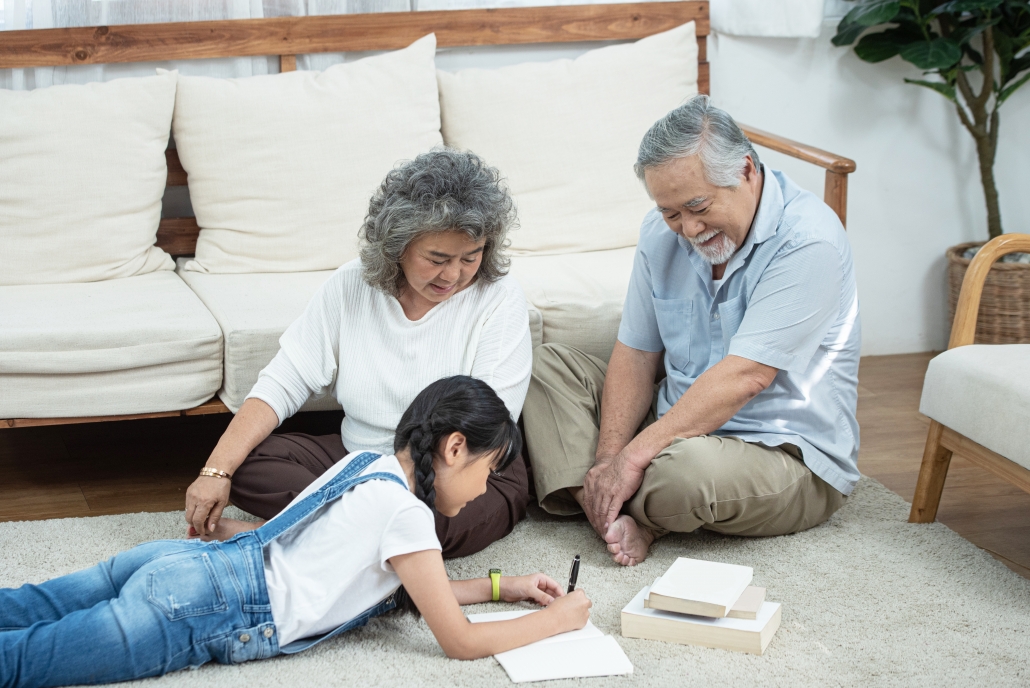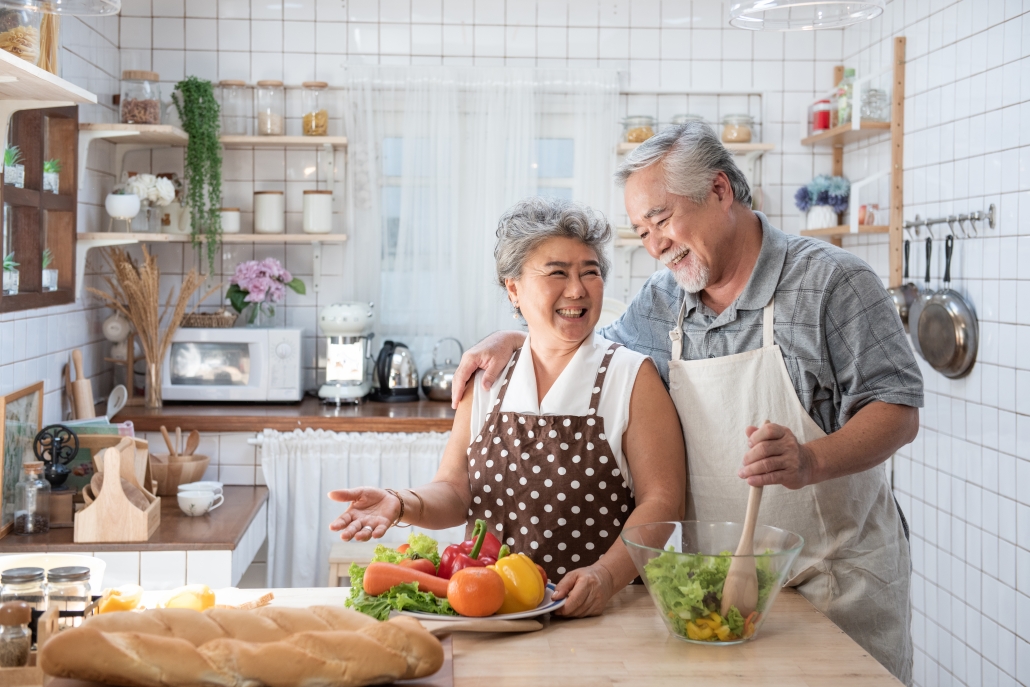Over the past few weeks, several clusters of infections have emerged along with a pattern of local unlinked community cases. Therefore, the Multi-Ministry Taskforce has announced additional measures and restrictions under Phase 2 (Heightened Alert) to minimise transmission of the virus.
On 16th May 2021, Phase 2 (Heightened Alert) started so as to reduce the risks of community transmission. Everyone is encouraged to stay indoors and only leave home for essential services such as groceries and food.
Based on a Social Attitudes of Singaporeans survey conducted by the Ministry of Social and Family Development, it was found that Singaporeans value families – survey revealed that around 40% of families with young children live with or close to their parents. Having said that, it is not easy when you have 3 generations living under 1 roof.
The Singapore government has been continuously improving housing estates to ensure that the needs of the elderly are better catered to. Thus, on a smaller scale, couples who have plans to live together with their parents should ensure their homes are senior-friendly (i.e., safe for an elderly to reside in).
While including senior-friendly features in homes is fundamental, there are other practices that can be adopted to ensure a fully senior-proof home. Here is a guideline on how to keep different sections of your home, senior-friendly.
Entryways
Easily the most commonly accessed part of your house, entryways should always be kept safe and convenient. One way to do so is to make your entryways barrier-free. Barrier-free entryways make it easier for family members and guests who are temporarily physically disabled to gain access to, and around your home. To achieve accessible entryways, ensure that the path to your front entrance has little to no steps.
Though having a ramp would be ideal, it may not be feasible especially if you live in a non-landed housing unit (i.e., HDB flat or condominium). Within your house, entryways leading to other rooms should not be divided by a threshold. Not only does this make passing through your house more manageable for wheelchair users, it also eliminates a common tripping hazard for able-bodied people and toddlers.

Living Room
Probably the second most frequented area of your house, living rooms should have sufficient manoeuvring space for users. A 1250mm by 1500mm space is ideal as this is the right amount of space for wheelchair users. While sufficient manoeuvring space is important, it is also crucial to ensure that this space is free from obstacles, projections or protrusions. This eliminates any hazards that might be present in the living room, making it safe for the elderly.
Furniture in the living room should be light and easy to move around in case you need to create more space or reach for items that have fallen. When shopping for furniture, avoid those that may have sharp edges or uneven surfaces as these may pose potential dangers to users.
Additionally, if your parent(s) have impaired hearing, install visual doorbells that come with vibration or light indicators accompanied with the conventional audio feature.
Kitchen
Functionality and practicality are priority when it comes to the kitchen. To limit the need for climbing up stools, opt for kitchen shelves that are attached to the ground so that frequently used kitchen items can be stored there instead of at overhead shelves. You can also consider installing pull-down shelves for effortless reach or pull-out ones to reduce the strain of bending over when reaching for items at the back of cabinets. All these design specifications will greatly aid your elderly parent when they are cooking or cleaning up.
If your elderly parent uses a wheelchair, install a sink with knee clearance for better reach. Another added detail to incorporate when installing a sink is to fix a tap that comes with a level handle and a pull-out flexible hose that can be extended. Lowered cooking surfaces and mounted wall oven/microwave at reachable heights will also make it easier for wheelchair users to access these appliances.
For added safety, you can consider choosing induction cookers instead of gas cookers as the latter poses a fire hazard.
As with other parts of the house, make certain that your kitchen has ample unobstructed manoeuvring space.

Bedroom
While comfort is essential in the bedroom, when the elderly is involved, function and safety take precedence. Installing lower drawers or cabinets is ideal for storing frequently used items as they are kept within reach.
If you do not face space constraints, you can consider building a walk-in closet so that accessibility is improved for persons on wheelchairs. Moreover, a spacious closet will allow things to be properly stored so that the chances of items falling and hurting someone is minimized.
Multi-way switches are perfect for bedrooms as your elderly parent would not have to cross the room in the dark to operate the room lights when going for nightly bathroom trips. One switch can be placed at the bedroom door and another by the bed. Switches should also be placed at a maximum height of 1200mm above ground level to maintain reachability. Bedside lamps and motion-sensor lights are also encouraged as an added safety measure.
Bathroom
Bathrooms pose the highest threats in comparison to the rest of the house. Nevertheless, there are certain practices that can be adopted to minimize the chances of encountering accidents in the bathroom.
For starters, opt for floor tiles that are the most slip resistant. In addition, place slip-proof mats at appropriate areas of your bathroom like the main entrance and the wet section of your bathroom.
Step-in showers are more practical and safer than bathtubs as the step needed to be taken to enter bathtubs are relatively high hence making it dangerous for the elderly to access. Handheld showerheads are more suitable than fixed showerheads as it allows for greater flexibility when showering. To make showering more comfortable for your elderly parent, you can also consider installing a foldable bath chair.
Grab bars should be fixed at the shower and beside the toilet bowl to make it easier for elderly users to maintain their balance.
As an added safety feature, you can consider placing a call bell in your bathroom. The call bell should be equipped with a waterproof push-button or pull-chord that will enable the elderly to operate the bell.
Lastly, the bathroom door should be able to open both ways in case of an emergency.
For overall safety
While the aforementioned advises are specific practices for the respective areas in your house, here are some essential practices to ensure overall safety:
- Floor tiles should be stable, firm and slip-resistant throughout your entire house, especially areas like the kitchen and bathroom.
- Allow for adequate lighting (both natural and artificial) as an elderly typically needs 2 to 3 times more illumination as compared to a younger person.
- Ample unobstructed space to be provided within the house for easy accessibility.
Though it may seem a little untimely to be making such drastic modifications to your future/current home, it is always better to be prudent. Nevertheless, if you wish to refer to a standard set of guidelines on creating an elder friendly environment, the Building and Construction Authority (BCA) released a newsletter on this topic. You can access the newsletter here!
Want to find the best mortgage rate in town? Check out our free comparison service to learn more!
Read more of our posts below!

